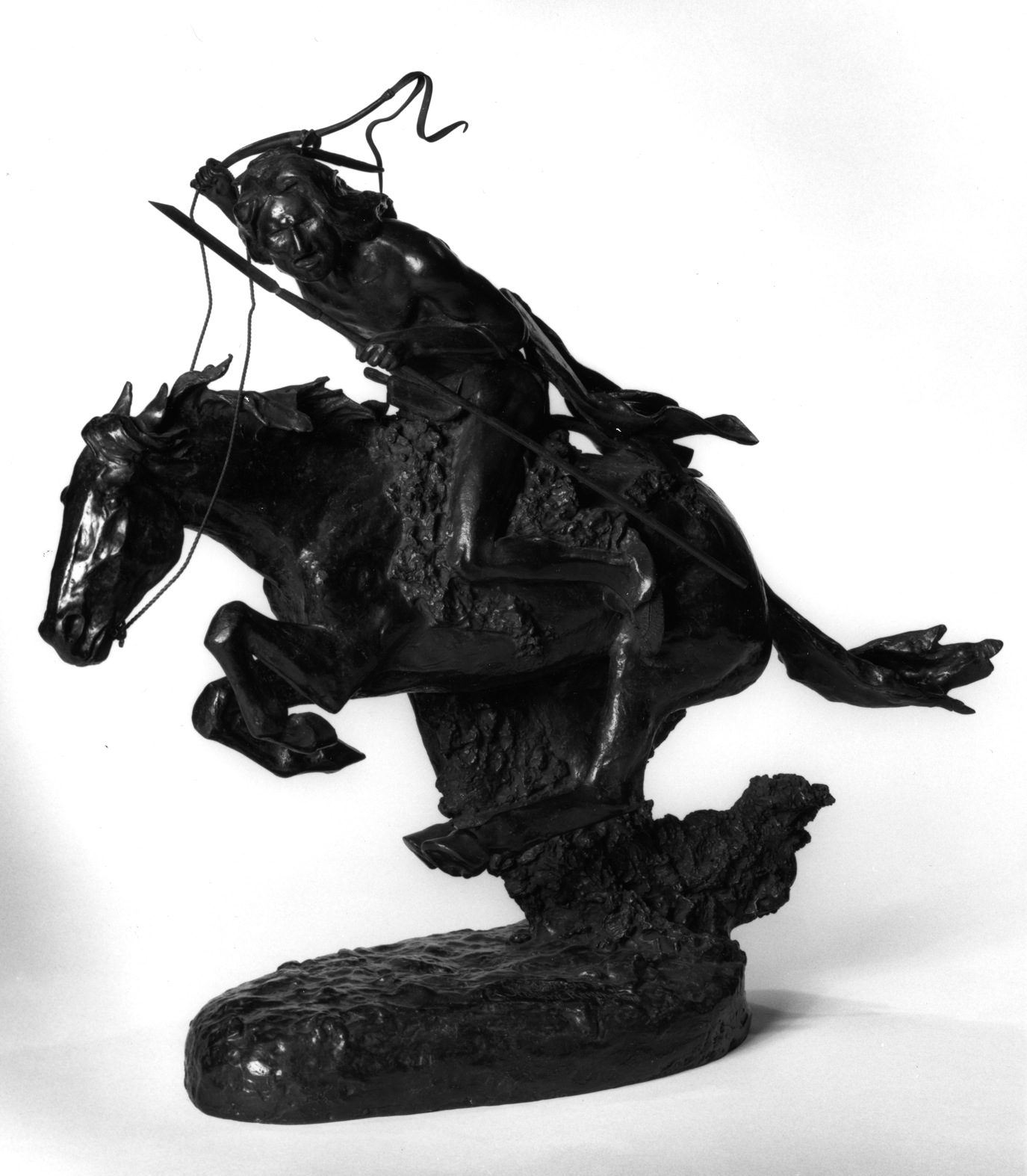The Cheyenne
(18th and 19th Centuries )
In 1880 Remington went West, sending sketches of Western life back to Eastern newspapers. In 1886 he came back East and began painting. In 1894 he turned to modeling for bronze sculpture and was thrilled with the results: "My watercolors will fade but I will endure in bronze."
Remington's vision of a great Plains Indian brave in a moment of tensed exertion as he enters the fray, spear held high, is riveting. The horse and rider seems to float, the buffalo hide trailing behind. While there is one best view, every side merits attention. The gestures of the man and the movement of the horse "suppose" an adversary and a prairie. The work is surprisingly self-sufficient; one does not wonder about the landscape.
While Remington initially used sand casting, this is the first bronze to be cast by the lost wax process; the results are visible in the evocative texture of the buffalo robe.
Provenance
Provenance (from the French provenir, 'to come from/forth') is the chronology of the ownership, custody, or location of a historical object. Learn more about provenance at the Walters.
Acquired by Mr. and Mrs. H. Norman Baetjer, Stevenson, Maryland; given to Walters Art Museum, 1980.
Exhibitions
| 1998-2001 | Highlights from the Collection. The Walters Art Gallery, Baltimore. |
| 1995 | The Allure of Bronze. The Walters Art Gallery, Baltimore. |
Geographies
USA (Place of Origin)
Measurements
H: 21 15/16 x W: 23 3/4 in. (55.7 x 60.4 cm)
Credit Line
Gift of Mr. and Mrs. H. Norman Baetjer, 1980
Location in Museum
Not on view
Accession Number
In libraries, galleries, museums, and archives, an accession number is a unique identifier assigned to each object in the collection.
In libraries, galleries, museums, and archives, an accession number is a unique identifier assigned to each object in the collection.
54.2568


